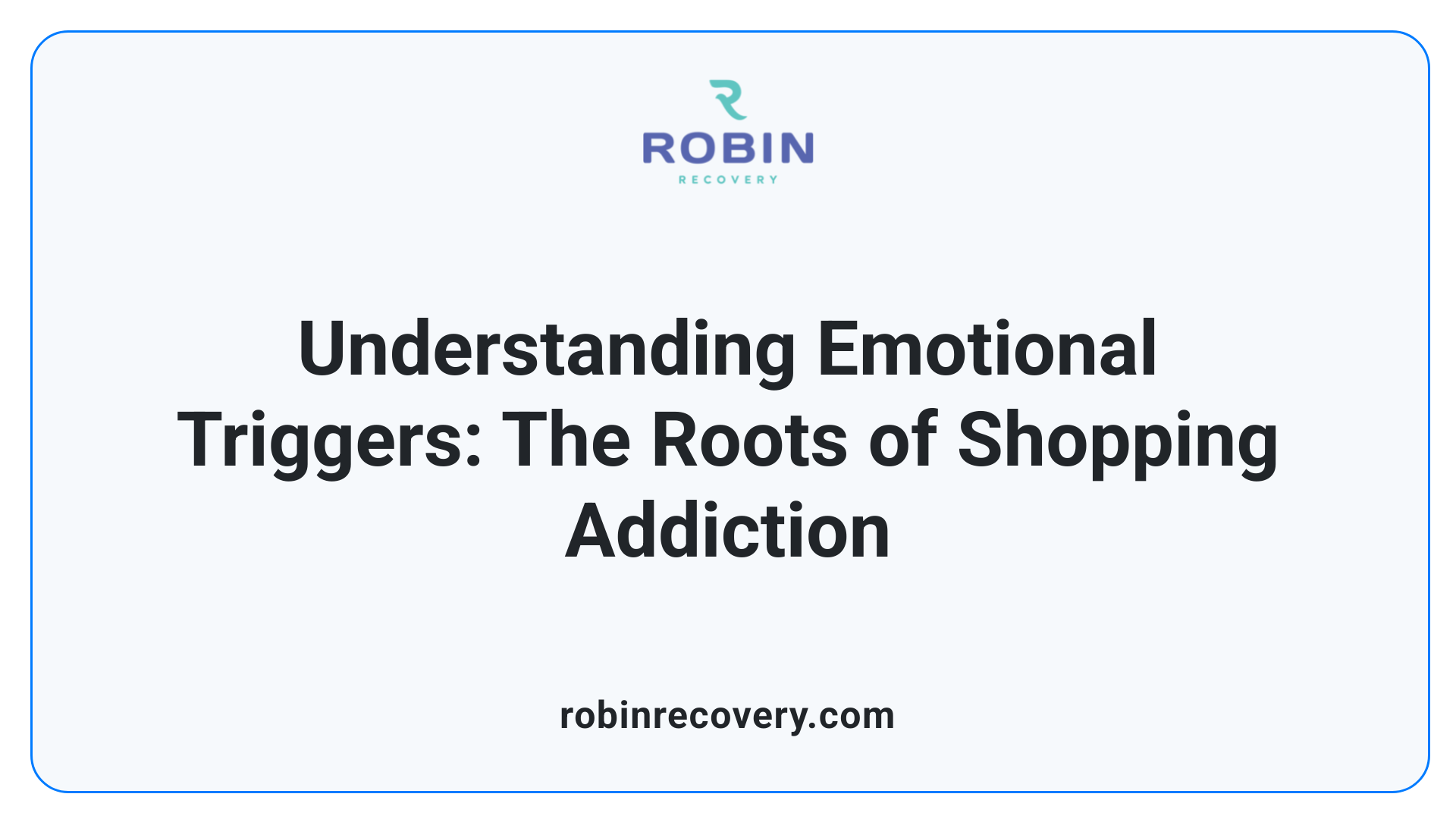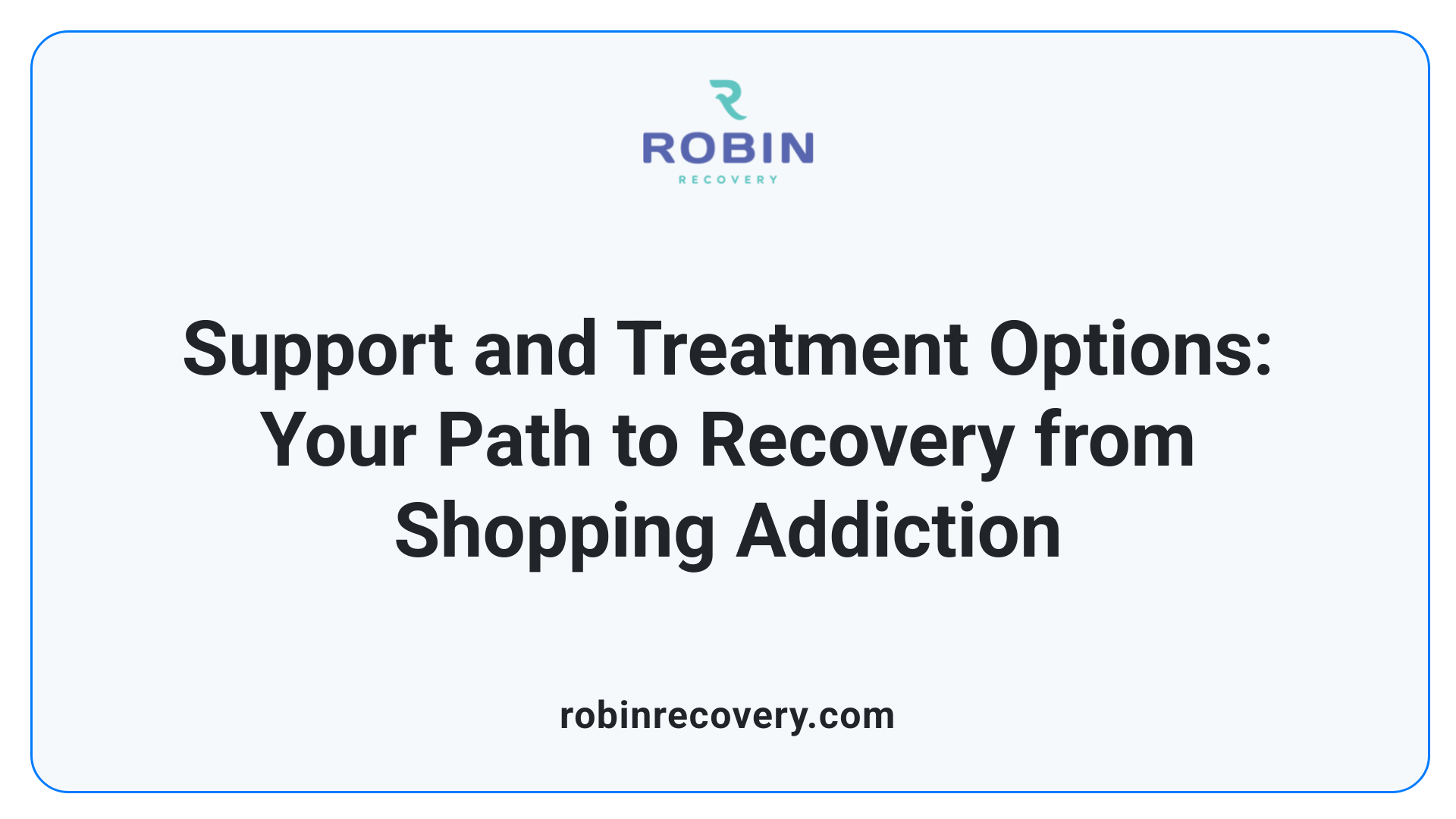How to Stop Shopping Addiction

Understanding Shopping Addiction: A Hidden Struggle
Shopping addiction, also known as compulsive buying disorder, is a behavioral addiction characterized by an uncontrollable urge to shop and spend excessively, often leading to emotional distress and significant financial problems. This article explores the signs, causes, and strategies to help individuals break free from this compulsive behavior, offering guidance rooted in scientific research and clinical practice.
Recognizing the Signs and Effects of Shopping Addiction

What are the signs and effects of shopping addiction?
Shopping addiction, also known as compulsive shopping disorder, involves an overwhelming urge to shop excessively, despite negative consequences. People with this addiction often experience a persistent preoccupation with shopping, spending beyond their means, and hiding or lying about their purchases. They might feel a rush or euphoria during shopping, which provides a temporary escape from emotional distress such as anxiety or depression.
Common behaviors include frequent shopping sprees, accumulating unused items, and neglecting responsibilities or personal relationships. The emotional toll can manifest as feelings of guilt, shame, or regret after shopping, along with financial issues like debt or maxed-out credit cards.
The impact extends beyond finances. Shopping addiction can contribute to mental health struggles, including heightened anxiety and depression, and can strain family or social relationships. In severe cases, it may even lead to legal problems related to financial misconduct.
Underlying psychological factors, such as low self-esteem, coping with difficult emotions, and societal influences like materialism, play significant roles. Brain studies suggest abnormalities in reward centers that reinforce compulsive buying behaviors.
Effective treatment includes behavioral therapies, support groups, and sometimes medication, all aimed at addressing emotional triggers and improving impulse control. Recognizing these signs early can help prevent long-term emotional and financial damage.
The Psychological and Neurological Underpinnings

What causes shopping addiction?
Shopping addiction often stems from a complex interplay of brain chemistry, emotional states, and social influences. On the neurological level, abnormalities in brain reward centers particularly involving dopamine pathways can make shopping feel pleasurable, reinforcing the behavior much like substance addiction.
Psychologically, individuals with low self-esteem, depression, or anxiety may turn to compulsive shopping as a way to temporarily lift their mood or gain a sense of control. This behavior acts as a coping mechanism to avoid negative emotions.
Social and cultural factors also play a role. Societal pressures, advertising, and materialistic values encourage buying as a status symbol or a method to gain social acceptance. Easy access to credit cards and online shopping platforms reduces the effort and restraint needed to make impulsive purchases, which can intensify the addiction.
Research into the neurobiological and psychological aspects of shopping addiction suggests that these factors create a cycle where shopping temporarily stimulates dopamine release, resulting in feelings of pleasure. Over time, this reinforcement can lead to persistent addictive behaviors despite harmful financial and emotional consequences.
Cause Type Description Impact on Shopping Addiction Brain reward system Abnormalities in dopamine pathways, increased reward response Reinforces shopping as a source of pleasure Emotional triggers Low self-esteem, depression, anxiety Drives compulsive behavior to escape negative feelings Social influences Advertising, materialism, social status pursuits Encourages consumerism and habitual shopping behavior Accessibility Online shopping, credit cards, instant gratification Facilitates impulsive and repetitive shopping habits
Understanding these factors can help in developing targeted treatments and strategies for managing shopping addiction effectively.
Differentiating Normal from Compulsive Shopping
How can I differentiate between normal shopping and compulsive shopping?
Understanding the distinction between normal shopping and compulsive shopping is essential for recognizing when intervention might be necessary.
Normal shopping usually involves purchasing items based on need or desire, with a clear purpose and control over spending. It does not cause emotional distress or financial strain, and individuals typically can stop or limit their shopping without difficulty.
On the other hand, compulsive shopping is marked by an uncontrollable urge to buy, often driven by emotional needs rather than practical purpose. Shoppers with this issue may spend excessive amounts beyond their means, often to experience a temporary feeling of euphoria or relief from negative emotions like anxiety, stress, or low self-esteem.
Behaviorally, compulsive shopping features preoccupations with shopping or thoughts about buying, repeated attempts to cut back that fail, and secretive or hiding behaviors to conceal purchases.
The consequences of each type of shopping also differ significantly. Normal shopping, in moderate and mindful amounts, generally does not lead to adverse outcomes. Conversely, compulsive shopping can result in severe financial problems, strained relationships, and impaired daily functioning.
In summary, the primary factors that differentiate these behaviors include the level of control, emotional motivation, preoccupation with shopping, and the tangible negative impacts on one’s life. Recognizing these signs can prompt individuals to seek appropriate help before the problem worsens.
Practical Strategies to Halt Excessive Shopping
How do I get rid of my shopping addiction?
Overcoming shopping addiction involves a combination of professional help, personal strategies, and support systems. The first step is to seek help from mental health professionals like therapists or counselors who specialize in behavioral addictions. They can help uncover underlying emotional issues, such as depression, anxiety, or low self-esteem, that may contribute to compulsive shopping.
Building healthier coping mechanisms is crucial. Instead of turning to shopping for relief, engage in activities such as exercise, hobbies, or social interactions that provide positive dopamine boosts without the negative consequences. Creating and sticking to a shopping list prevents impulsive purchases, while avoiding triggers like online stores and large malls limits temptation.
Financial discipline plays a key role. Eliminate or limit access to credit cards, set strict budgets, and track every expenditure. These practices help reinforce control over spending habits. Support from friends, family, or dedicated groups can provide accountability and encouragement. Joining support groups like Spenders Anonymous or Debtors Anonymous can normalize the struggle and foster communal support.
For immediate assistance or additional resources, you can contact the SAMHSA’s National Helpline at 1-800-662-HELP. This free, confidential service connects callers to local treatment programs, support groups, and facilities tailored for behavioral health concerns. Most importantly, understanding that recovery is a process and seeking support is a strong first step toward overcoming shopping addiction.
Addressing Underlying Emotional Causes

What are the emotional causes underlying shopping addiction?
Shopping addiction is often driven by complex emotional factors. Many individuals turn to compulsive shopping as a way to cope with negative feelings such as stress, sadness, loneliness, guilt, or shame. Shopping provides a temporary sense of relief and a quick mood boost, thanks to the dopamine hit that real shopping triggers in the brain.
For some, shopping becomes a substitute for feeling better or less alone, especially when experiencing emotional distress. It can serve as an escape from difficult circumstances or feelings, offering instant gratification and a fleeting sense of control.
Low self-esteem and feelings of inadequacy also play a role. People may buy things to enhance their self-image or to seek social acceptance, hoping that material possessions will improve how they see themselves or how others see them.
Additionally, those with difficulties in regulating emotions or with impulsive tendencies are more vulnerable. Their neurochemical reward system, particularly dopamine release during shopping, reinforces the behavior.
Overall, shopping addiction often originates from an attempt to escape or soothe painful emotional states. Recognizing these underlying causes is crucial for effective treatment and developing healthier coping mechanisms.
Community Support and Formal Treatment Options

Are there support groups like Shopaholics Anonymous?
Yes, support groups such as Shopaholics Anonymous and Debtors Anonymous play a vital role in helping individuals battling shopping addiction. These groups provide a safe space for members to share experiences, gain accountability, and receive emotional support. Participating in such groups can diminish feelings of shame and isolation, making recovery more achievable.
Support groups often follow a structured program similar to other addiction recovery models, encouraging members to discuss their urges and setbacks openly. They emphasize peer support, personal accountability, and practical strategies to curb compulsive shopping.
How effective is cognitive-behavioral therapy (CBT)?
Cognitive-behavioral therapy (CBT) is one of the most effective treatment modalities for shopping addiction. It helps individuals identify and challenge irrational thoughts and beliefs that trigger compulsive shopping behaviors. CBT also teaches healthier coping mechanisms to manage emotions like stress, anxiety, or boredom that often lead to shopping binges.
During therapy sessions, individuals learn to recognize triggers, develop strategies to delay or avoid impulsive purchases, and replace shopping with alternative activities that provide similar dopamine releases, such as exercising or engaging in hobbies.
What are other treatment options?
Besides support groups and CBT, other treatment methods include holistic approaches such as inpatient or outpatient treatment centers, which may offer a combination of therapy, medication, and lifestyle support. Medication might be prescribed to address underlying mental health issues like depression or anxiety that coexist with shopping addiction.
Financial counseling can help individuals manage debt and develop sustainable spending habits. Support from family and friends, combined with ongoing professional help, significantly increases the chances of overcoming compulsive shopping.
Treatment Type Description Additional Details Support Groups Facilitate peer sharing, accountability, and emotional support Examples include Shopaholics Anonymous, Debtors Anonymous Cognitive-Behavioral Therapy Focuses on changing thought patterns and behaviors Often considered the most effective therapy Inpatient/Outpatient Centers Provide structured therapeutic environments May include medication, counseling, lifestyle support Financial Counseling Help with debt management and budgeting Essential for addressing financial consequences Family and Peer Support Ongoing emotional support from loved ones Reinforces recovery efforts
Addressing shopping addiction often requires a combination of these approaches. Having a supportive community alongside professional treatment significantly improves recovery outcomes.
Taking Steps Toward Recovery
Overcoming shopping addiction requires recognizing its signs, understanding its causes, and employing practical strategies to regain control. Professional support, whether through therapy, support groups, or medical intervention, plays a crucial role in breaking the cycle. Addressing emotional triggers and fostering healthier habits can help individuals build resilience and achieve financial and emotional well-being. Remember, help is available, and change is possible for those willing to take the first step.
References
- National Helpline for Mental Health, Drug, Alcohol Issues - SAMHSA
- Shopping Addiction: Signs, Types & Causes - Sierra Vista Hospital
- Compulsive Buying Disorder: When Shopping Addiction Becomes a ...
- Breaking the Cycle: How to Recognize and Overcome a Shopping ...
- How to Stop Compulsive Shopping - Cleveland Clinic Newsroom
- Shopping addiction information & treatment | UKAT
- How to Stop Shopping Addiction: Healthy Alternatives for a Better Life
- The science of shopping addiction: what makes people buy loads of ...
- Online Shopping Addiction: Causes & 12 Key Tips to Stop
